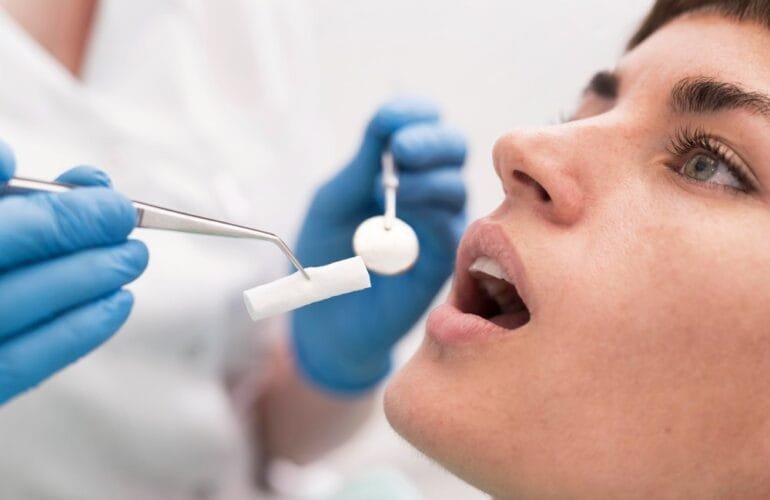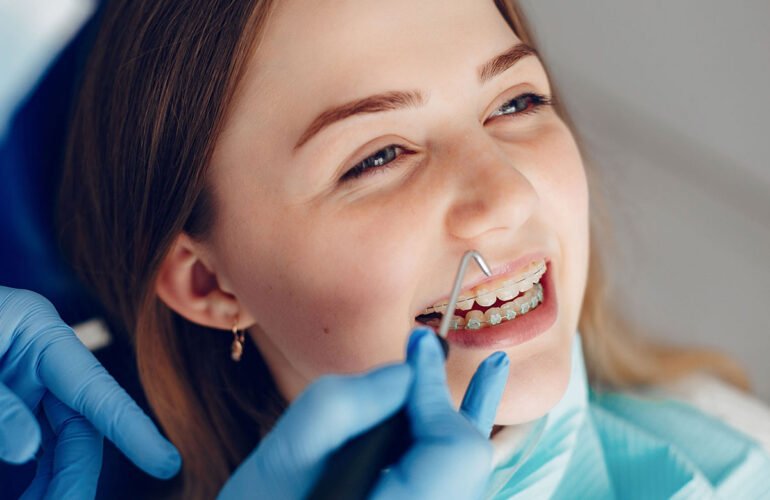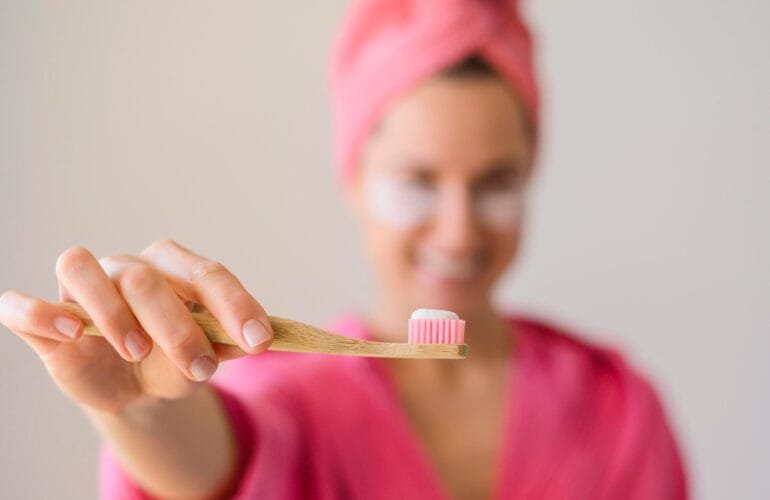Routine dental check-ups are the cornerstone of preventive oral care. Even if your teeth feel fine and your smile looks bright, professional dental visits reveal what brushing and flossing at home can’t. Dentists are trained to detect early signs of tooth decay, gum disease, infection, and even oral cancer long before symptoms become noticeable.
A dental check-up typically happens every six months, but for some individuals especially those with gum disease, diabetes, or high cavity risk visits may be more frequent. These appointments aren’t just about cleaning; they’re an investment in your long term health.
The Role of Preventive Dentistry
Preventive dentistry is built on the principle that early detection saves teeth and money. Rather than waiting for pain or decay to appear, regular visits allow dentists to catch small problems early. This proactive approach can prevent more complex treatments, such as root canals or tooth extractions.
Dentists also provide education about proper oral hygiene, diet, and lifestyle habits that impact oral health helping patients make informed choices every day.
Step-by-Step Overview: What Happens During a Dental Check-up
A standard dental appointment typically includes several structured phases, ensuring every aspect of your oral health is examined. Let’s walk through the process in detail.
1. Patient Medical History Review
Your dentist or hygienist starts by reviewing your medical history. Certain health conditions, like diabetes, heart disease, or autoimmune disorders, can affect your oral health. Similarly, medications such as blood thinners or antihistamines may influence treatment decisions. Sharing updates ensures safe and effective care.
2. Initial Oral Examination
Using a small mirror and dental probe, your dentist performs an initial inspection. They look for visible issues such as cavities, discoloration, inflamed gums, or lesions. The dentist may also evaluate your bite alignment and jaw movement.
3. Dental Cleaning (Prophylaxis)
Next comes professional cleaning a refreshing experience for most patients. The hygienist removes plaque and tartar buildup using specialized tools. Even with daily brushing, plaque can harden into tartar that’s nearly impossible to remove at home. After scaling, teeth are polished with a mildly abrasive paste to remove surface stains, leaving them smooth and shiny.
4. Dental X-rays and Imaging
Dental X-rays reveal problems beneath the surface between teeth, under gums, and inside bone structures. These images help detect cavities, cysts, impacted teeth, and bone loss early. Modern digital X-rays use minimal radiation and are considered safe for most patients.
5. Oral Cancer Screening
A critical but often overlooked part of a check-up is the oral cancer screening. Dentists examine your lips, tongue, cheeks, and throat for unusual lumps, sores, or tissue changes. Early detection of oral cancer significantly improves treatment outcomes.
6. Dentist’s Findings and Treatment Plan
Once all evaluations are complete, your dentist discusses the findings. If they detect cavities, gum inflammation, or potential alignment issues, they’ll recommend appropriate treatments or preventive steps. This may include fluoride application, scaling and root planing, or even orthodontic referrals.
What Dentists Look For During Your Visit
Cavities, Plaque, and Tartar Buildup
During a routine dental check-up, your dentist looks for early signs of cavities, plaque, and tartar buildup. Cavities form when bacteria in plaque produce acids that erode tooth enamel. Dentists use explorers and X-rays to identify decay even before you can feel it. Removing plaque and tartar early prevents cavities and gum disease.
Gum Health and Periodontal Evaluation
Your dentist also examines your gums for signs of redness, swelling, or bleeding early indicators of gingivitis. If untreated, it can progress to periodontitis, a serious condition that can lead to tooth loss. A periodontal probe measures the depth of gum pockets to assess disease severity.
Signs of Bruxism and Jaw Problems
Dentists can spot signs of teeth grinding (bruxism), jaw clicking, or misalignment. These issues may cause headaches, worn enamel, or temporomandibular joint (TMJ) disorders. Early intervention helps prevent damage.
How to Prepare for Your Dental Appointment
Preparation can help you feel more comfortable and get the most from your visit.
Preparing Questions for Your Dentist
Before your appointment, jot down questions about symptoms or treatments you’re curious about. Topics like teeth whitening, gum care, or orthodontics are common. Dentists appreciate engaged patients it helps them provide personalized care.
Managing Dental Anxiety
Dental anxiety is normal. Inform your dentist if you’re nervous they can use numbing gels, distraction techniques, or relaxation methods to ease your worries. Many clinics now offer sedation dentistry options for particularly anxious patients.

After the Check-up: Post-Appointment Care
Understanding Treatment Recommendations
If your dentist suggests additional treatment, make sure you understand the reasoning. Ask about the urgency, cost, and benefits of each procedure. A transparent discussion builds trust and clarity.
Scheduling Follow-up Visits
Routine visits are key to prevention. Most patients benefit from six-month check-ups, but those with gum disease may need quarterly cleanings. Sticking to the recommended schedule keeps your smile healthy year-round.
Benefits of Regular Dental Check-ups
Early Detection Saves Time and Money
Addressing dental problems early prevents costly and invasive treatments later. For instance, catching a small cavity today can save you from a root canal tomorrow.
Boosting Confidence and Fresh Breath
Regular dental cleanings remove plaque and stains that brushing alone can’t handle. The result? Whiter teeth, fresher breath, and a more confident smile.
How Often Should You Visit the Dentist?
Most experts, including the American Dental Association (ADA), recommend biannual visits. However, your dentist may tailor this based on your oral health status, lifestyle, or risk factors. Smokers, pregnant women, and diabetic patients often benefit from more frequent check-ups.
The Link Between Oral Health and General Health
Your mouth is a window into your body’s overall health.
Oral Health and Heart Disease
Bacteria from infected gums can enter the bloodstream and contribute to arterial inflammation, increasing cardiovascular risk. Maintaining gum health helps protect your heart.
Oral Health and Diabetes
Diabetes can worsen gum disease, while untreated gum infections make blood sugar harder to control. Regular dental visits support systemic health by managing oral inflammation.
Choosing the Right Dentist for Routine Check-ups
Qualifications and Certifications
Choose a dentist licensed by a recognized dental board. Look for continuing education credentials these indicate commitment to staying updated with the latest practices.
Communication and Comfort
Trust and communication are vital. Your dentist should listen, explain clearly, and make you feel comfortable throughout your visit.
Common Myths About Dental Check-ups
“I Don’t Need to Visit the Dentist if Nothing Hurts”
Pain often appears in advanced stages of dental problems. Preventive check-ups catch issues before discomfort arises.
“Dental X-rays Are Dangerous”
Modern digital X-rays emit extremely low radiation comparable to a short airplane flight. They’re safe, quick, and essential for accurate diagnosis.

Cost and Insurance Coverage
Most dental insurance plans cover routine exams and cleanings twice a year. Out-of-pocket costs depend on additional procedures like fluoride treatments or sealants. Always confirm coverage with your provider before the appointment.
Frequently Asked Questions (FAQs)
- How long does a routine dental check-up take?
Typically, a complete visit lasts about 45–60 minutes, depending on your needs and whether X-rays are taken. - Do dental cleanings hurt?
No. You may feel mild pressure or vibration, but modern tools make the process comfortable and efficient. - How soon can I eat after a dental cleaning?
You can eat immediately after, though it’s best to avoid staining foods like coffee or berries for a few hours. - Can I skip X-rays if my teeth feel fine?
It’s not recommended. X-rays detect problems that are invisible during visual exams, ensuring a complete assessment. - Is fluoride treatment necessary for adults?
Yes. Fluoride strengthens enamel and reduces sensitivity. It’s especially beneficial for adults prone to decay. - What if I’m afraid of the dentist?
Tell your dental team beforehand they can offer comfort measures, sedation options, or schedule extra time to ease your anxiety.
Conclusion: Building a Lifelong Oral Health Routine
Understanding what to expect during a routine dental check-up empowers you to take charge of your oral health. Regular visits aren’t just about keeping your teeth clean they safeguard your entire body’s well-being. By committing to preventive care, following dentist advice, and scheduling your routine dental check-ups on time, you can enjoy a lifetime of healthy, confident smiles.
Disclaimer: This article is for general informational purposes only and should not be relied upon as medical or dental advice. Always consult your dentist or healthcare professional for personalised guidance.
References
- American Dental Association (ADA): www.ada.org
- Centers for Disease Control and Prevention – Oral Health: www.cdc.gov/oralhealth
- Mayo Clinic – Dental Care Basics: www.mayoclinic.org




